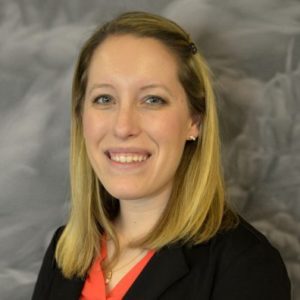The Background
On July 11, 2018 Gov. John Kasich issued an executive order that gives the state government control over farming practices for over 7,000 farmers and 2 million acres of farmland in northwest Ohio. Despite touting  a Common Sense Initiative during his campaign, which included a transparent and inclusive approach to policy making, the governor left agriculture stakeholders out of the conversation. The executive order instructs the Ohio Soil and Water Conservation Commission to consider classifying eight watersheds in northwest Ohio as distressed. If these watersheds are classified as distressed, the following requirements are made of every farmer:
a Common Sense Initiative during his campaign, which included a transparent and inclusive approach to policy making, the governor left agriculture stakeholders out of the conversation. The executive order instructs the Ohio Soil and Water Conservation Commission to consider classifying eight watersheds in northwest Ohio as distressed. If these watersheds are classified as distressed, the following requirements are made of every farmer:
Nutrient management requirements for all nutrient sources (includes manure and synthetic fertilizer);
- Development of associated management plans for agricultural lands and operations within the designated watershed boundaries;
- Requirements for the storage, handling, land application and control of residual farm products, manure and erosion of sediment and substances attached thereto within the designated watershed boundaries.
On July 19, the Ohio Soil and Water Conservation Commissioners voted 4-2 to establish a subcommittee to review whether or not eight watersheds should be designated Watersheds in Distress per the request of the executive order.
The commission’s decision gives stakeholders an opportunity to study and weigh in on the designation process itself as well as seek answers to the questions of timing and resource allocation. Farmers have many questions and concerns on how the designation and subsequent rules could impact them. They also want to show that the various mandatory and voluntary practices of farmers in the western Lake Erie watershed already in place are working. Ultimately, the decision allows agriculture to be a part of the process, which was not the case before the executive order was issued.
Relevance to eastern Ohio farmers
For counties outside of the Western Lake Erie Basin, it’s easy to look at this action, shrug it off and breathe a sigh of relief that this isn’t the case in our neck of the woods. But to not consider these types of regulatory implications to this area would be unwise. Because the fact of the matter is, algal blooms are a concern all over Ohio (examples include Chippewa Lake in Medina County and Portage Lakes in Summit County). Whether deserved or not, agriculture across Ohio will continue to be scrutinized as nutrient contributors to these issues.
So how are farmers to respond? Well, it can start with reviewing the practices on your own farm. Are you testing your soil for nutrient concentrations? Are you following the fertilizer application guidelines as you are instructed to in your fertilizer certification classes? Are you careful not to over-apply manure? Do you try not to apply manure on saturated or frozen ground? If regulations like these were to ever go statewide, would you be able to meet manure storage requirements (at least six months of storage)?
We hear from our members that answers to some of these questions are tough. Some of the dairies in Wayne County, for example, do not have six months of manure storage. At a time when milk prices and the farm economy is at an extreme low, it’s also not a topic that one wants to consider. But given the statewide concerns about water quality, it is one that we have to because our members believe everyone should have access to clean water.
What is Farm Bureau doing
The members of the county Farm Bureaus, Ohio Farm Bureau and other agricultural organizations are working hard to be heard in Columbus. We are thankful that the Soil and Water Conservation Commission heard the concerns from the agricultural industry and recognized the work that Ohio Farm Bureau, OSU Extension and others are doing to research the most effective practices to reduce phosphorus runoff. County Farm Bureaus and Ohio Farm Bureau continue to stay engaged in conversations with legislators about this issue and calling for transparent and informed conversations that shape policy development.
What can you do?
First and foremost, it starts with responsible nutrient management practices on your farm. If you have questions about who to ask, call your County Farm Bureau office and we can get you connected to your OSU Extension agent or SWCD. Then, share your story. Your legislators, neighbors, friends and family need to hear that farmers want clean water for Ohio and that you are doing your part. Finally, join your County Farm Bureau if you are not already a member. Our membership amplifies the voice of agriculture to our elected officials to ensure that the interests of farmers are not forgotten.